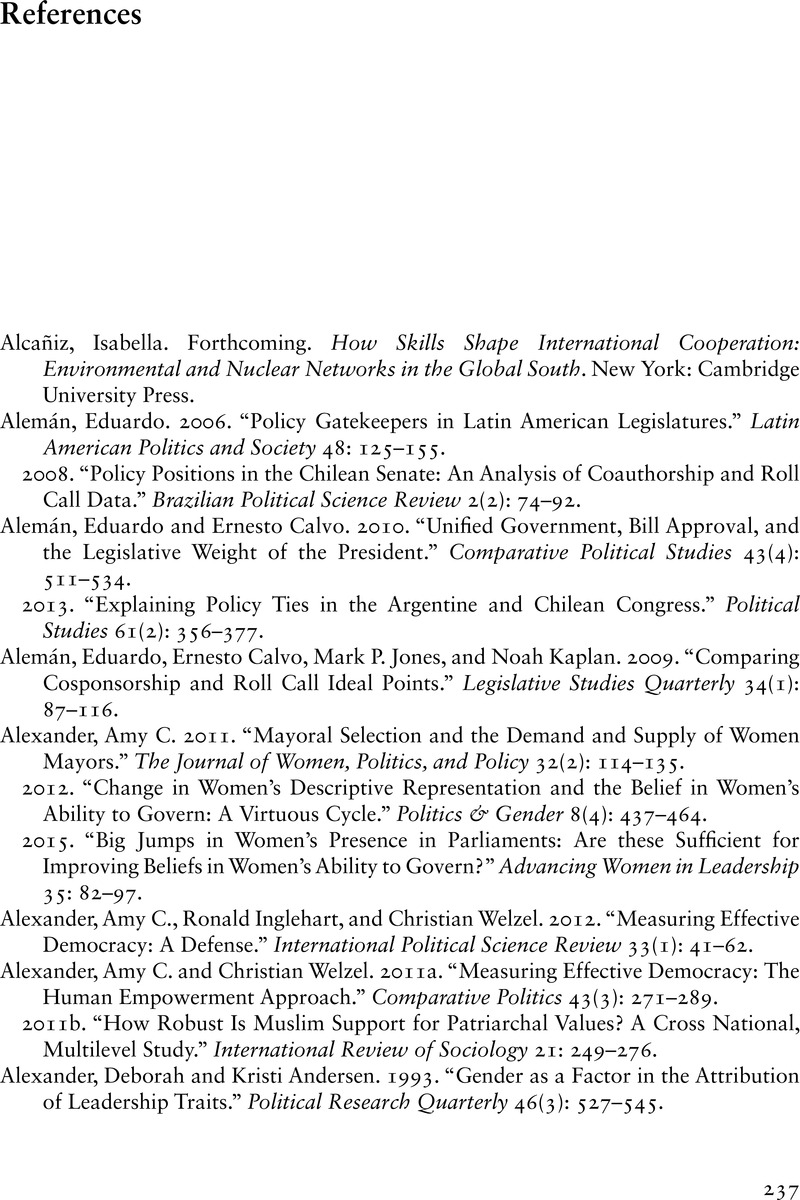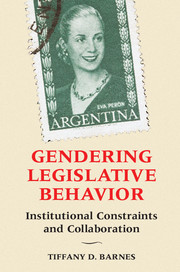Book contents
- Frontmatter
- Dedication
- Contents
- List of Tables
- List of Figures
- Acknowledgments
- 1 Introduction
- 2 A Theory of Legislative Collaboration
- 3 Can Democracy Be Collaborative? Examining Patterns of Collaboration
- 4 Why Do Women Collaborate? Evidence of Women's Marginalization
- 5 When Do Women Collaborate? Explaining Between-Chamber Variation
- 6 When Do Women Collaborate? Explaining Within-Chamber Variation
- 7 Collaboration in a Cross-National Context
- 8 Conclusion
- References
- Index
- References
References
Published online by Cambridge University Press: 05 June 2016
- Frontmatter
- Dedication
- Contents
- List of Tables
- List of Figures
- Acknowledgments
- 1 Introduction
- 2 A Theory of Legislative Collaboration
- 3 Can Democracy Be Collaborative? Examining Patterns of Collaboration
- 4 Why Do Women Collaborate? Evidence of Women's Marginalization
- 5 When Do Women Collaborate? Explaining Between-Chamber Variation
- 6 When Do Women Collaborate? Explaining Within-Chamber Variation
- 7 Collaboration in a Cross-National Context
- 8 Conclusion
- References
- Index
- References
Summary

- Type
- Chapter
- Information
- Gendering Legislative BehaviorInstitutional Constraints and Collaboration, pp. 237 - 264Publisher: Cambridge University PressPrint publication year: 2016



